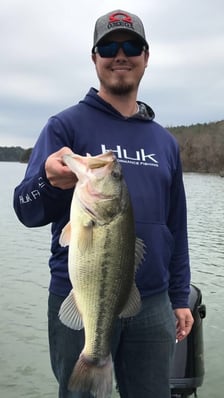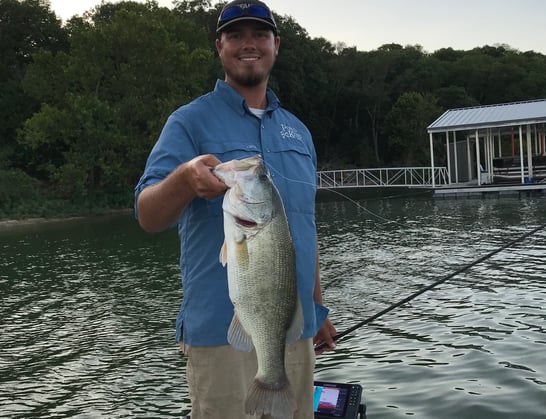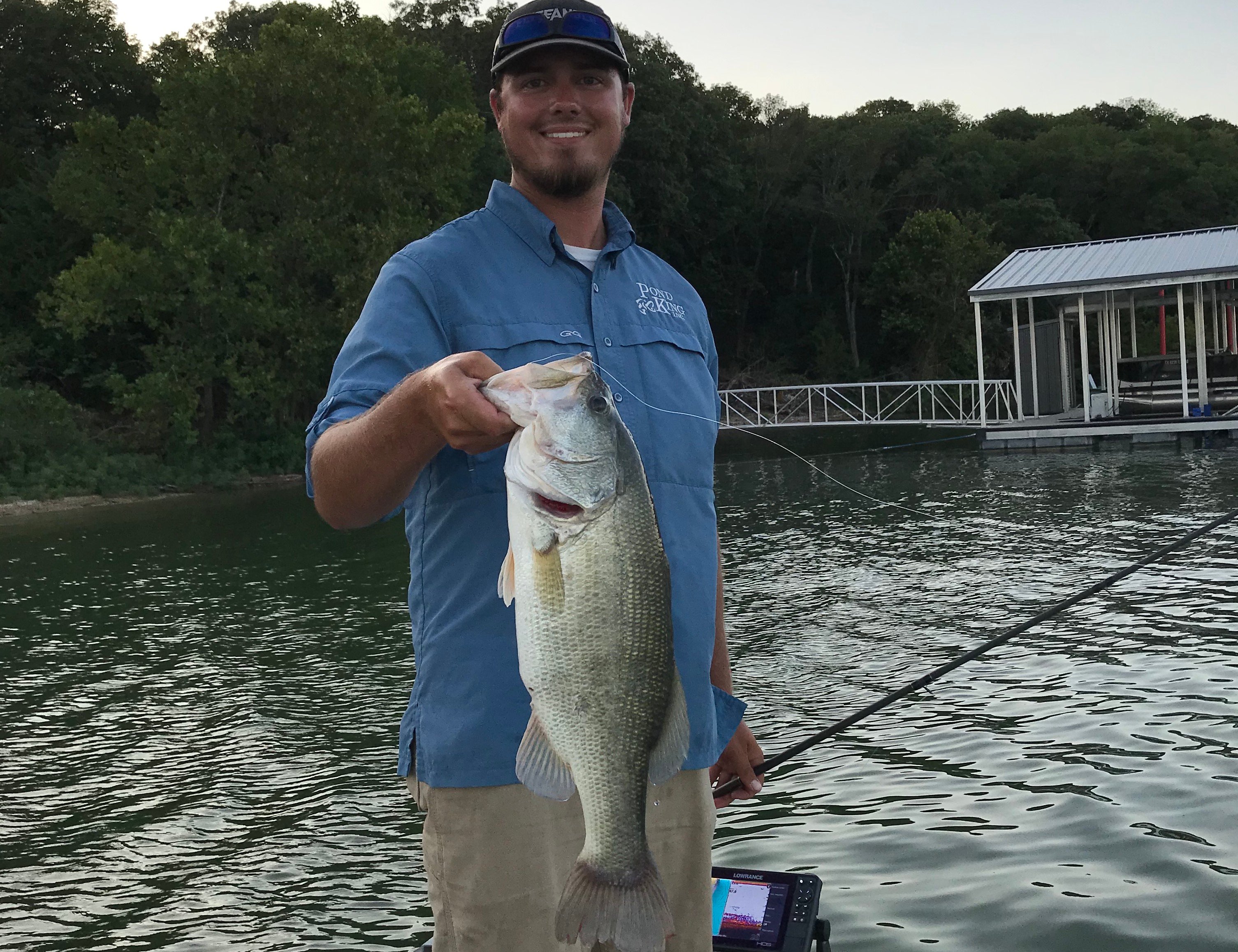When the topic of growing trophy Largemouth Bass (Micropterus salmoides) comes up, you are likely to hear talk about their genetics, specifically the Florida strain and F1’s (or “Tiger Bass”). While these terms may be familiar, they may be confusing if you aren't sure what their differences actually are. In this blog, we are going to examine each of these types of Bass and help you gain a better understanding of Largemouth Bass genetics.
The Right Genetics to Raise a 10+ Pound Largemouth Bass
Let's start off with a little background information on the Largemouth Bass in general. Largemouth are actually members of the “sunfish” family (Centrarchidae), same as the other common species of Bass (Smallmouth and Spotted). Largemouth can be found in just about every state as they have been widely stocked due to their desirability as a sport fish. Largemouth Bass can be distinguished from other Bass by their upper jaw, which extends beyond the eye when the mouth is closed (like an extreme underbite), as well as the presence of a deep notch between their spiny dorsal (anterior dorsal) and soft dorsal (posterior dorsal).
Why Choose Native or Northern Strain Largemouth Bass
 Native or Northern-strain (subspecies)Largemouth Bass (Micropterus salmoides salmoides) is the most common Largemouth used to stock ponds and lakes across the United States. But why? The Northern strain of Largemouth Bass is an excellent fish for a wide variety of stocking situations. Here's why:
Native or Northern-strain (subspecies)Largemouth Bass (Micropterus salmoides salmoides) is the most common Largemouth used to stock ponds and lakes across the United States. But why? The Northern strain of Largemouth Bass is an excellent fish for a wide variety of stocking situations. Here's why:
- They are known to tolerate cold temperatures even in climates where the lakes and ponds may stay frozen most of the winter.
- This strain maintains quick growth rates. Here in Texas, with adequate forage, they can put on about one pound of weight per year and commonly grow upwards of 6 pounds. Interestingly, they rarely exceed 10 pounds.
- This species is more susceptible to angling methods than other strains of Largemouth, making them an excellent choice as "fishing stock."
Characteristics of the Florida Strain Largemouth Bass
 The most famous strain is the Florida strain (subspecies) Largemouth Bass (Micropterus salmoides floridanus). Not surprisingly, the Florida strain is native to Florida, especially peninsular Florida. The Florida-strain Largemouth Bass are renowned because:
The most famous strain is the Florida strain (subspecies) Largemouth Bass (Micropterus salmoides floridanus). Not surprisingly, the Florida strain is native to Florida, especially peninsular Florida. The Florida-strain Largemouth Bass are renowned because:
- They are well-suited for warmer climates.
- They are known for growing to weights over 10 pounds, potentially reaching sizes upwards of 20 pounds.
- They have a higher winter mortality rate when compared to northern or native Largemouth.
While growth rates of both strains are comparable for the first few years of life, the Florida-strain fish will maintain an increased growth rate into later stages of life, which sets it apart from the Native or Northern-strain fish. When deciding if Florida strain is suitable for your pond, think about how harsh a winter you typically get in your area. While the Florida-strain fish are suitable for use in most of the southeastern United States, they can be very susceptible to winter mortality. Studies have shown that the Florida-strain fish exhibit significantly greater winter mortality when compared to northern-strain fish. This mortality is most evident in first-year fish. To combat this, when stocking Florida-strain fish, we suggest you stock fish of a larger size whenever possible to give them the best chance of winter survival.
The Best of Both Subspecies: the F1 Largemouth Bass
 When a Native or Northern-strain fish breeds with a Florida strain, the first generation becomes a hybrid of both subspecies (strains), resulting in the F1 Largemouth, sometimes called Tiger Bass. F1 fish exhibit what is known as "hybrid heterosis" or "hybrid vigor," which means they exhibit enhanced characteristics of each parent subspecies. Like the Native Bass, F1 Bass are less susceptible to winter mortality than their Florida-strain parent. And, like the Florida strain, they maintain an increased growth rate over a more extended period than their northern-strain parent. For those reasons, F1 Largemouth have become very popular in stocking throughout the southeast, where winter mortality is still a concern. Just keep in mind that hybrid heterosis/vigor gets lost in subsequent generations (F2, F3, etc.), so you'll want to restock every 5 or 6 years to maintain the enhanced traits in the gene pool of your pond or lake.
When a Native or Northern-strain fish breeds with a Florida strain, the first generation becomes a hybrid of both subspecies (strains), resulting in the F1 Largemouth, sometimes called Tiger Bass. F1 fish exhibit what is known as "hybrid heterosis" or "hybrid vigor," which means they exhibit enhanced characteristics of each parent subspecies. Like the Native Bass, F1 Bass are less susceptible to winter mortality than their Florida-strain parent. And, like the Florida strain, they maintain an increased growth rate over a more extended period than their northern-strain parent. For those reasons, F1 Largemouth have become very popular in stocking throughout the southeast, where winter mortality is still a concern. Just keep in mind that hybrid heterosis/vigor gets lost in subsequent generations (F2, F3, etc.), so you'll want to restock every 5 or 6 years to maintain the enhanced traits in the gene pool of your pond or lake.
There are just a few more things to consider when deciding whether the Florida-strain or F1’s are right for your pond:
- The size of your pond: We only recommend stocking these two species if your pond is 3 acres or more; otherwise, you won't get the full benefit of these fishes.
- The availability of the fish from nearby hatcheries: Fish don't travel well. And, short of trucking fish straight from peninsular Florida, it can be hard to get pure Florida strain. For these reasons, Pond King typically only carries the Northern and F1 strains.
If you are still unsure about which strain is right for your pond and your goals, don't hesitate to give us a call or send us an email. We'll help you figure it out.



